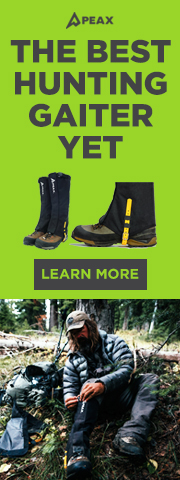JohnFitzgerald
New member
- Mar 31, 2014
- 1,108
I feel that commercialization made elk calling more complicated than it really is. It?s hard for me to believe that the same sound can have different meanings depending on the circumstances. In order to believe that, one would have to assume that the elk have a high level of intelligence. Sorry, but they are animals that have instinct and have no high level of reasoning or logic. They react based on their environment. So for me a bugle is a bugle, a bark is a bark, and a mew is a mew. Simple?simple?.simple!
Intensity level of the sound does indicated importance of the vocalization or a better yet, urgency. Elk vocalize because they want an action from another elk. Even warning type sounds call for an action. The action is do not come this way!
Also length of the sound given has meaning. It?s a proven fact the when a longer sound is given, the easier it is to pin point the source location. So a nice long bugle defines the bulls location at a greater distance.
So, how do I know what sounds to use and when? Well, first I?ve define what some basic sounds mean! Without definitions you?ll find it hard to adapt to the situation if it changes.
Bugle: Announcing the geographical location of ?the? elk.
Chuckle: Expression to prove ?he? is the dominant bull. A cow?s natural instinct is go bread with the most dominant. So in a sense, it?s an invitation.
Growl: Warning.
Moans: Agitated.
Bark: Alerted, asking for identification. The exact same reasons you?d hear a bark from your dog.
So every bugle I hear I know it\'s exact meaning based upon my definitions. Example, from a herd bull I might get the following response to my bugle. Growl into a bugle followed by chuckles. The expression is warning, I?m right here, and I?m the dominant bull.
Another example is for a hunter to give a short bugle followed by chuckles when in close to a herd bull. Short bugles indicate that you are talking to elk within close proximity and chuckles would be an attempt to show ?his? cows that you are a dominant bull. Exactly what you?d hear a real satellite do when trying to hook a cow or two. ;-)
Every situation can be different. So I remember my 7 Golden elk calling rules.
1) Elk are curious.
2) Elk are social and herd animals.
3) Bulls would rather you go to them.
4) All bulls have the instinct to rut.
5) Bulls will try to keep every cow.
6) Bulls will try gain any cow but not at the risk of losing one they already own.
7) Herd bulls can be challenged for dominance, but only when you\'re within their comfort zone.
When I enter into a calling sequence, I assess the situation, define the bull I?m hunting, and rely on my definitions and rules.
My 2-cents and worth nothing more!
Intensity level of the sound does indicated importance of the vocalization or a better yet, urgency. Elk vocalize because they want an action from another elk. Even warning type sounds call for an action. The action is do not come this way!
Also length of the sound given has meaning. It?s a proven fact the when a longer sound is given, the easier it is to pin point the source location. So a nice long bugle defines the bulls location at a greater distance.
So, how do I know what sounds to use and when? Well, first I?ve define what some basic sounds mean! Without definitions you?ll find it hard to adapt to the situation if it changes.
Bugle: Announcing the geographical location of ?the? elk.
Chuckle: Expression to prove ?he? is the dominant bull. A cow?s natural instinct is go bread with the most dominant. So in a sense, it?s an invitation.
Growl: Warning.
Moans: Agitated.
Bark: Alerted, asking for identification. The exact same reasons you?d hear a bark from your dog.
So every bugle I hear I know it\'s exact meaning based upon my definitions. Example, from a herd bull I might get the following response to my bugle. Growl into a bugle followed by chuckles. The expression is warning, I?m right here, and I?m the dominant bull.
Another example is for a hunter to give a short bugle followed by chuckles when in close to a herd bull. Short bugles indicate that you are talking to elk within close proximity and chuckles would be an attempt to show ?his? cows that you are a dominant bull. Exactly what you?d hear a real satellite do when trying to hook a cow or two. ;-)
Every situation can be different. So I remember my 7 Golden elk calling rules.
1) Elk are curious.
2) Elk are social and herd animals.
3) Bulls would rather you go to them.
4) All bulls have the instinct to rut.
5) Bulls will try to keep every cow.
6) Bulls will try gain any cow but not at the risk of losing one they already own.
7) Herd bulls can be challenged for dominance, but only when you\'re within their comfort zone.
When I enter into a calling sequence, I assess the situation, define the bull I?m hunting, and rely on my definitions and rules.
My 2-cents and worth nothing more!



